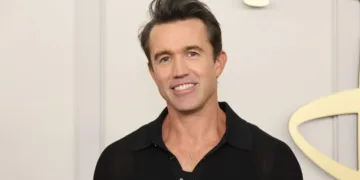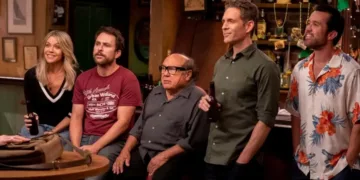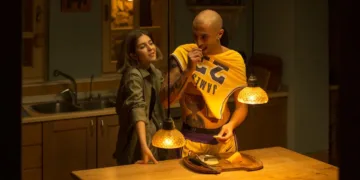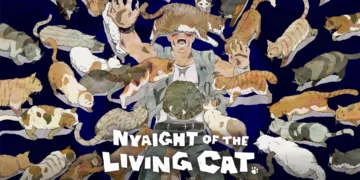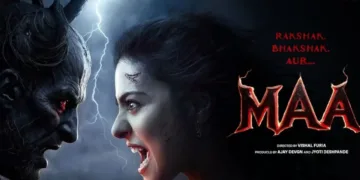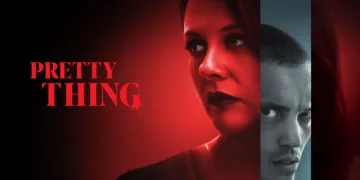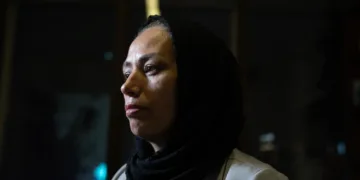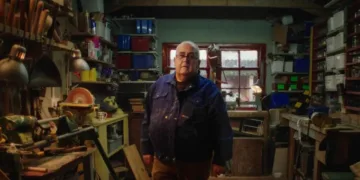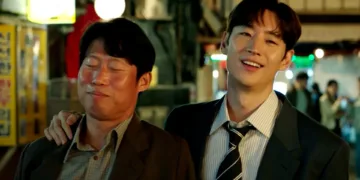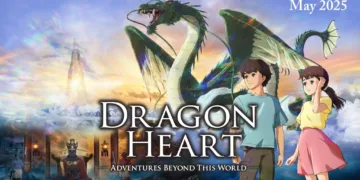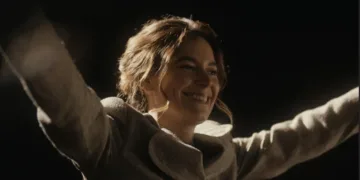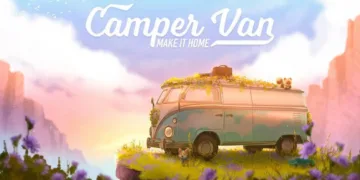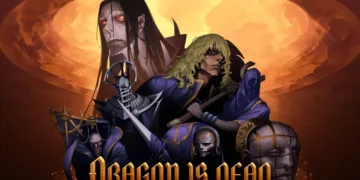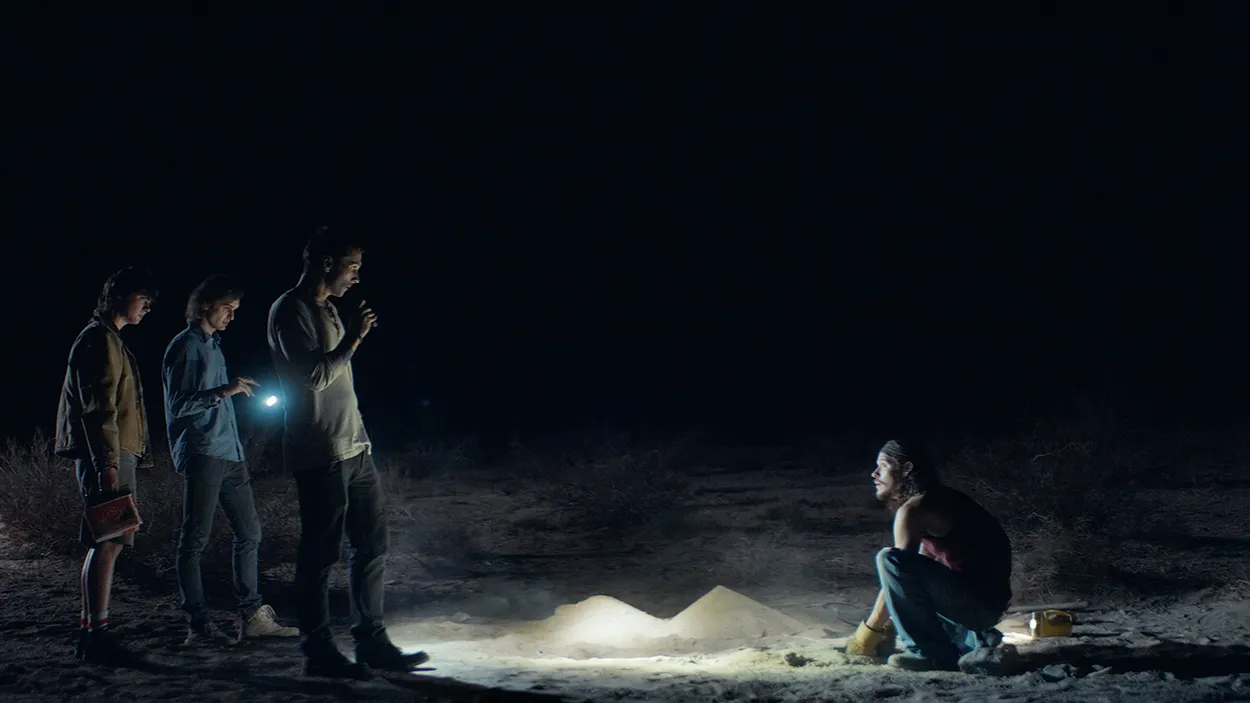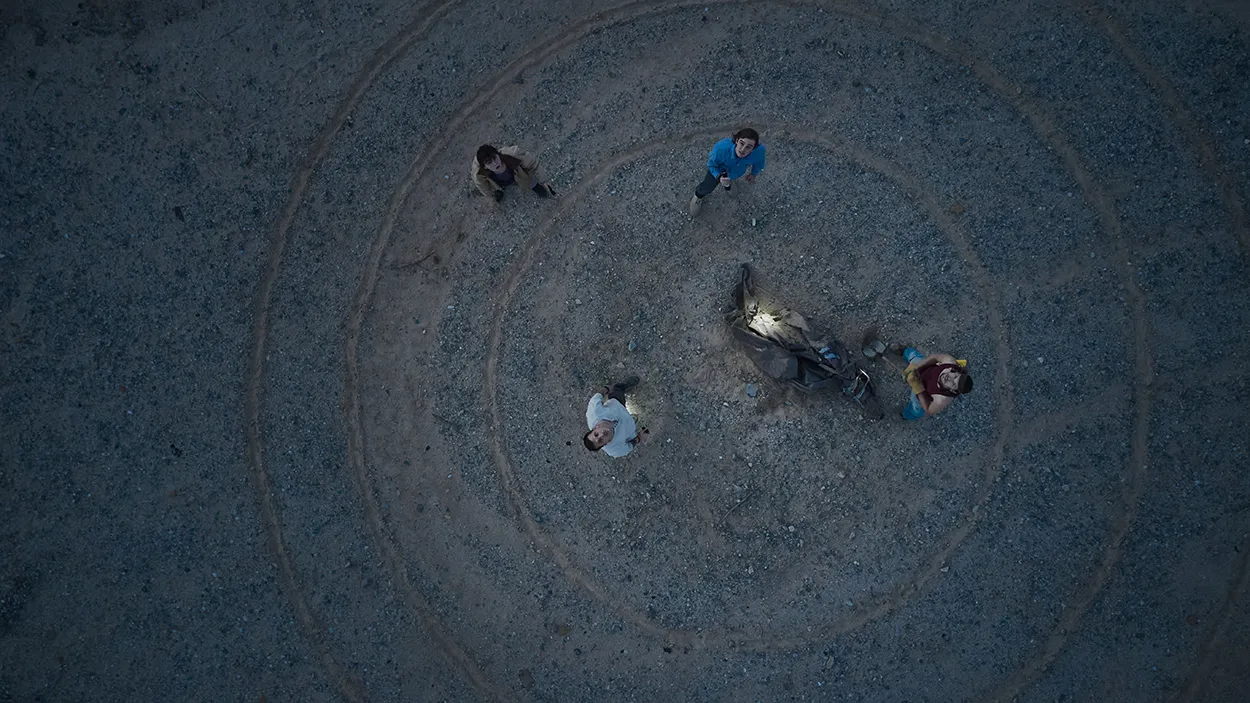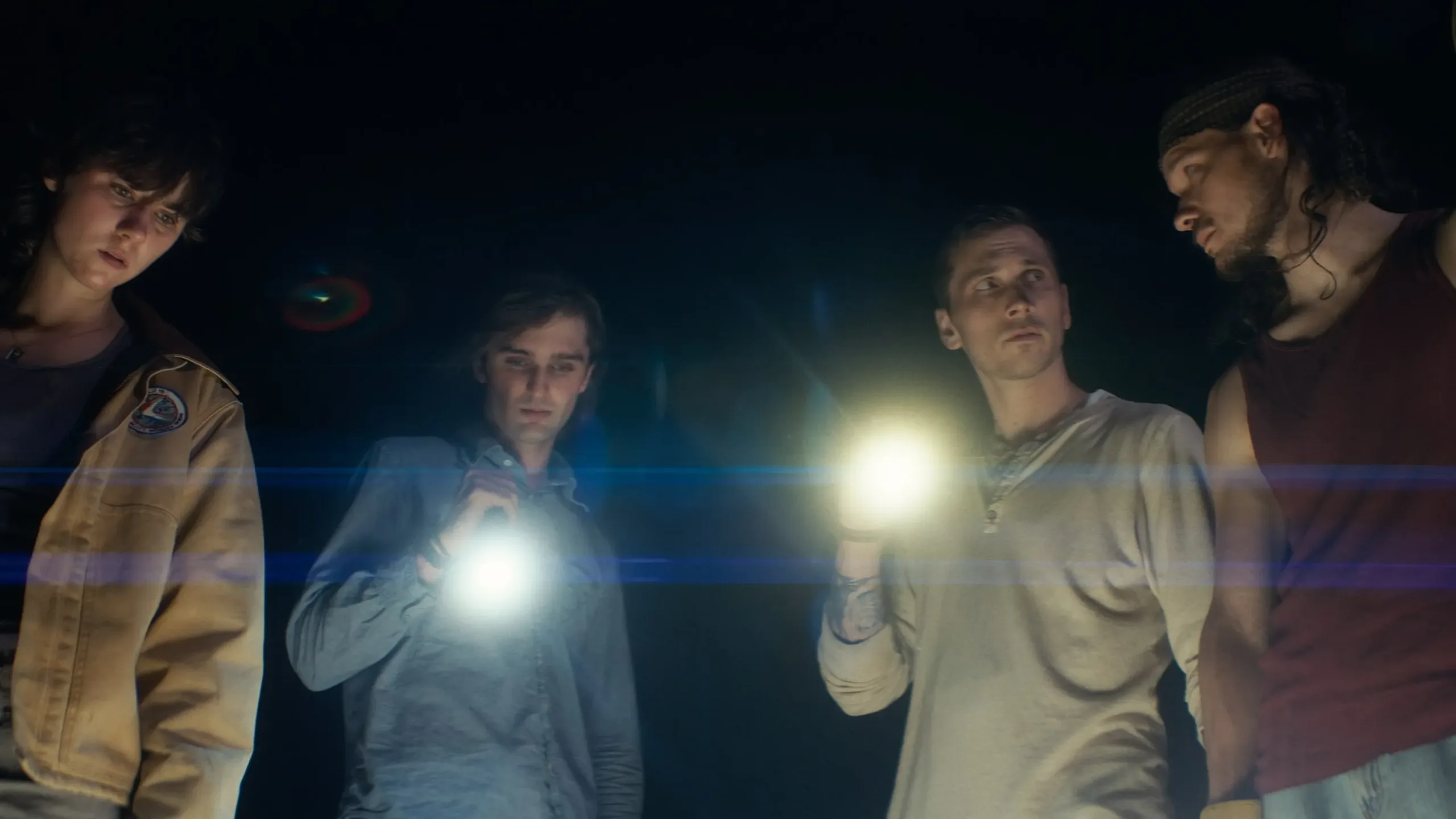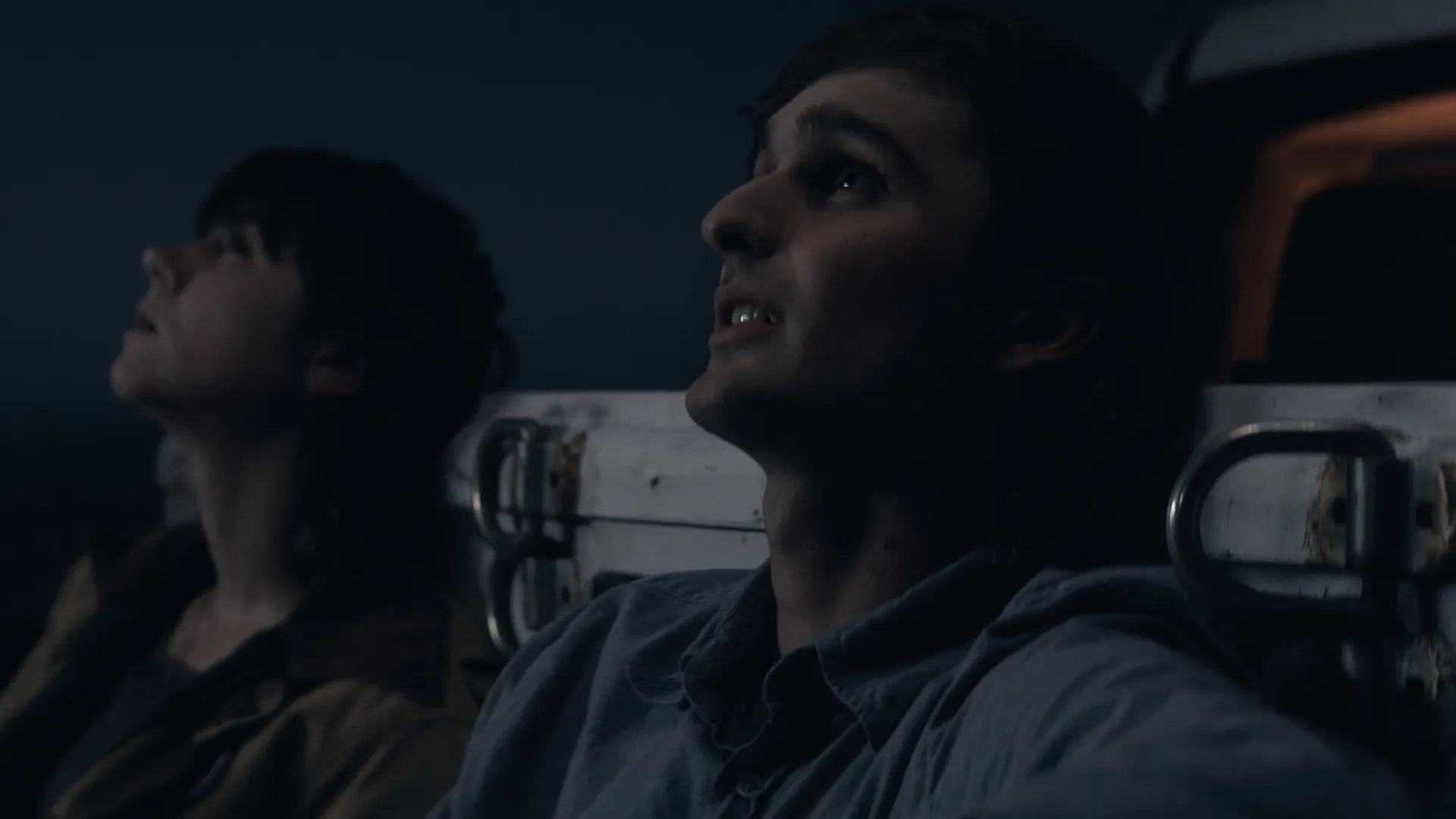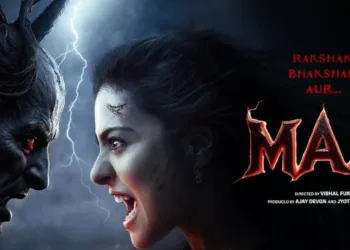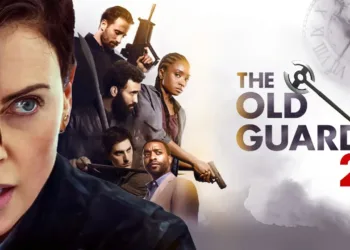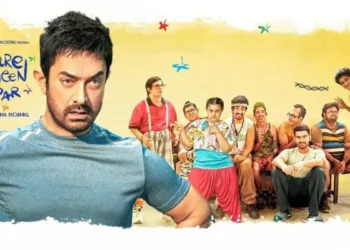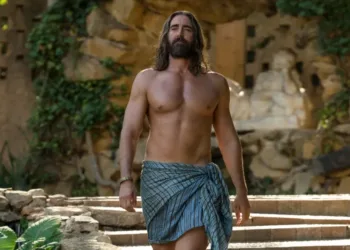The stark California desert is the setting for Gabriel Bienczycki and Richard Karpala’s haunting film Falling Stars, which mixes the supernatural with the real. In the film, Mike, Sal, and Adam, three brothers, embark on a perilous journey with their friend Rob to find the corpse of a witch that has been buried in the dry ground.
They are motivated by a mix of youthful bravado and innocent curiosity. This dangerous adventure seems to happen during the scary Harvest season, when supernatural forces are said to come down to earth like shooting stars and demand rites and sacrifices to keep people safe.
A folklore that feels both ancient and disturbingly current is steeped in this meticulously created world. The witches, woven into the fabric of everyday life, are not just made-up stories; they are real threats that loom over the community, serving as a grim warning of the violence that lies just below the surface of rural life.
The Harvest, a yearly event that symbolizes both good fortune and fear, underscores the brothers’ predicament and serves as a lens through which social worries about nature, femininity, and the basic horrors of the unknown come together. The breadth of the desert here is like the characters’ inner worlds: it’s big, but full of danger; every shadow could hide a witch ready to make her escape.
The Unraveling Threads of Fate
An inciting event steeped in young foolishness and the supernatural’s unstoppable pull is at the center of Falling Stars. Mike, Sal, and Adam, the three brothers, and their careless friend Rob decide to dig up the corpse of a witch. This is a terrible decision that sets off a chain of terrible events.
When you think about how impulsive this moment seems, it’s actually full of folklore and weighty consequences. When they disrespect the witch’s grave out of curiosity and bravado, they set off a curse that makes their lives a scary fall into chaos. The film does a great job of showing how one careless choice can domino effect on the whole community, not just the people who made the choice.
The tension grows noticeably as the narrative progresses. The brothers embark on a last-ditch effort to break the curse before the night’s end, now marked by their sin. With a growing sense of impending doom, their journey back to the desert turns into a race against time. Meeting their mother, Danni, shows them the scars that the Harvest season left on their family and the ghost of witchcraft that lives in their bloodline.
Her spooky warnings and the community’s palpable fear worsen their situation and highlight a shared worry that goes beyond their individual experiences. The brothers are fighting not only an outside threat, but also the deeply ingrained customs and fears that bind them together, forcing a confrontation with the very fabric of their identities.
Fractured Bonds: The Complexity of Brotherhood
Michael, Sal, and Adam, the three brothers in Falling Stars, represent a rich tapestry of emotional dynamics deeply rooted in the narrative. Mike, the oldest, is both a leader and a flawed spark. He acts with the careless confidence that young people often have.
His desire to discover the unknown is tinged with naivety, which points to deeper fears and lingering family issues. Between Mike’s bravado and Adam’s vulnurability, Sal, the middle brother, serves as a buffer. The character he plays struggles with the allure of adventure and the heavy weight of responsibility that comes with being part of a close-knit family.
Adam, the youngest, stands for innocence that gets caught in the middle of his brothers’ choices. The loss of childhood innocence in the face of existential threats is captured in his transformation from a participant with wide eyes to a more thoughtful figure.
The weight of the brothers’ ancestors’ fears and the current dangers they face cause their relationships to change as they navigate their perilous quest. The complexity of sibling relationships—teasing, protecting, and the ultimate confrontation of their shared legacy—is infused into every interaction. Their mother, Danni, stands in for a haunting figure in their lives, further emphasizing this dynamic.
Her character serves as a stark warning of the consequences of their lineage, steeped in regret and a frightful wisdom borne from experience. The brothers’ adventure is grounded in a rich, emotional context that underscores the gravity of their actions thanks to Danni’s warnings, which reverberate throughout the film.
The outside force, Rob, amplifies the tension in the main narrative. His careless excitement puts the brothers in danger, but his flaws show how dangerous things are for them. The film looks at themes of responsibility and repercussion through Rob’s character, showing how one person’s decisions can impact a whole community. Each supporting character enriches the narrative, creating a complex web of relationships that reflect the overarching themes of fear, responsibility, and the haunting legacies that shape people’s future.
Echoes of the Arcane: Witchcraft and the Human Condition
In Falling Stars, the complicated connection between witchcraft and sexism in society is explored, revealing long-standing fears and biases that are passed down from generation to generation. Witches are more than just supernatural tropes in this narrative; they represent our fears about being female and powerful.
The film asks how societal views have historically vilified women who deviate from male norms in a world where witches are as real as the sun setting over the desert horizon. The witches, who are usually bad guys, reflect a cultural narrative that is steeped in sexism against women, implying that the fear of the feminine is just as strong as the fear of the unknown.
This link goes beyond specific characters and makes a bigger point about nature and traumatic events that happen to generations. The Harvest season, a time when witches are said to fall from the sky, warns of how troubled our relationship with the natural world is.
The film underscores how these witchcraft themes are similar to the cycles of trauma that families go through as the brothers deal with the consequences of their actions. The curse they unintentionally call upon is not only a supernatural punishment, but also a manifestation of the burdens passed down through families for generations. It is a haunting warning that fears that aren’t dealt with can grow and show up in real ways.
The brothers’ journey is also driven by fear and curiosity, creating a delicate balance between the thrills of exploration and the risks of being careless. Their initial excitement at meeting the supernatural quickly becomes a confrontation with existential consequences, illustrating how curiosity can lead to dire consequences. This duality shows how fear affects young people and changes the way they make decisions in unpredictable ways.
The film suggests that the quest for knowledge can be as dangerous as the ignorance it frequently seeks to dispel as they navigate the perilous landscape of both the desert and their minds. In this way, Falling Stars is a warning story about how the allure of the unknown can trap even the most honest people in a web of family fears and social expectations.
Shadows and Stars: The Artistry of Falling Stars
The art style in Falling Stars is like a character, like the brothers traveling through the dry land. Gabriel Bienczycki, who also co-directed the film, did a fantastic job with the photography, which transports the audience to a haunting nighttime world where shadows loom large over the desert.
Setting much of the action at night heightens the tension and creates a sense of the unknown, where every sound and flicker of light could mean bad things are about to happen. The camera stays on the night sky for a long time, showing how big it is and how the stars shine like faraway eyes, telling us of the powerful forces at work in the universe. This contrast between beauty and terror is at the heart of the film’s theme, illustrating how beautiful nature can hide deep danger.
The skillful use of nature settings further amplifies the narrative’s emotional weight. The brothers’ isolation and the grave threats that loom large are reflected in the desolate desert landscape, which serves as a metaphor. The camera is often placed to create a sense of claustrophobia in the vast openness, which reflects the characters’ inner battles.
The storytelling style of Bienczycki and co-director Richard Karpala is equally engrossing, marked by a slow, deliberate pacing that evokes dread. They don’t use typical jump scares. Instead, they use a slow burn that draws the watcher into the psychological landscape of fear and curiosity.
Through their nuanced choices, they enrich the film’s study of generational trauma and the haunting presence of the supernatural, crafting an experience that sticks with you long after the credits roll. Falling Stars is a deep thought on how fragile people are in the face of the unknown because it seamlessly combines beautiful visuals with deep themes.
Resonant Chords: The Soundscape of Falling Stars
The music in Falling Stars, a haunting mix of bluesy undertones and ethereal melodies, is a big part of crafting the film’s emotional landscape. The music, written with a keen sense of atmosphere, moves through the narrative like a ghost, highlighting moments of dread and curiosity. Every note has a sense of dread, which adds to the tension in the story. The sad parts of the score make you feel longing, just like the brothers do as they go deeper into a dangerous world.
The careful attention to sound helps the film’s spooky atmosphere. When listened to with the quiet of the desert, the musical selections create a dissonance that heightens the viewer’s unease. During quiet times, the score’s faint echoes linger, giving the gaps between speech and action a spooky weight, as if the air around the brothers is charged with supernatural tension.
The mood of Falling Stars is mostly one of dread, but there are also brief times of beauty and longing. This duality encourages viewers to stay in the narrative’s uncomfortable parts, forcing them to confront their fears and interests. Rich in emotional nuance, the film’s atmosphere becomes a character in and of itself, drawing the audience in to help the brothers navigate the shadows on their perilous journey.
The Haunting Resonance of Falling Stars
Falling Stars is a great addition to the horror genre because it skillfully combines folklore with the raw emotions of family relationships. Its rich character development, moody cinematography, and moving soundtrack elevate the narrative above simple entertainment.
The film uses witchcraft as a lens to look at societal relationships and the dynamics of masculinity, allowing the audience to reflect on their relationships with the unknown.
Viewers who like horror that isn’t just about jump scares will enjoy this film because it is steeped in psychological depth. Fans of atmospheric storytelling, those interested in the connections between myth and modernity, and anyone drawn to tales that explore the complexities of human relationships will find Falling Stars both haunting and illuminating. It will stay in your mind long after the movie ends because it can make you feel fear and reflection.
The Review
Falling Stars
With its haunting look at family ties and the weight of ancestral fears, Falling Stars captivates with its masterful blending of moody photography, a moving soundtrack, and rich character development. The film's unique take on witchcraft and its touching comments on masculinity and trauma make it stand out in the horror genre and make it a must-see for anyone who likes both tension and depth. It is a thoughtful meditation on the unknown because tension and emotions stay with you.
PROS
- Stunning visuals enhance the film's eerie ambiance.
- Strong character development that explores familial relationships and trauma.
- Thoughtful examination of witchcraft and societal fears.
- A haunting score that complements the narrative's tension.
- Offers a blend of psychological horror with cultural commentary.
CONS
- Some viewers may find the slow build-up frustrating.
- The open-ended nature may leave some audiences wanting more resolution.
- Lack of conventional horror tropes might not appeal to all fans of the genre.



















